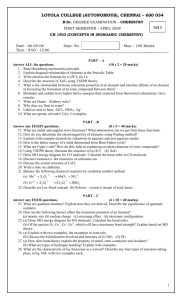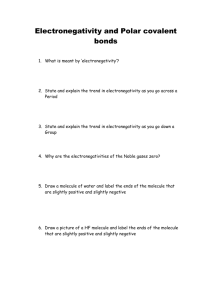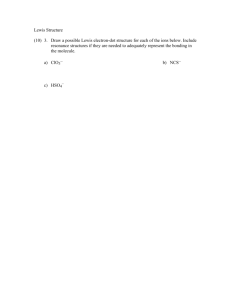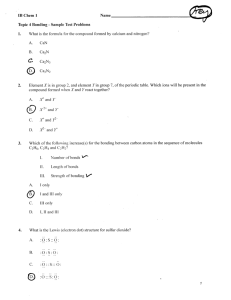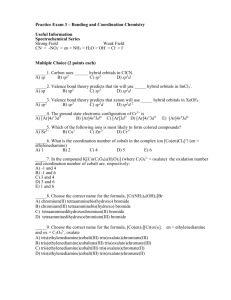jUtfaduAJsaUjJ ...<&*\.I&US<L m •..&*.. ta&Sh
advertisement
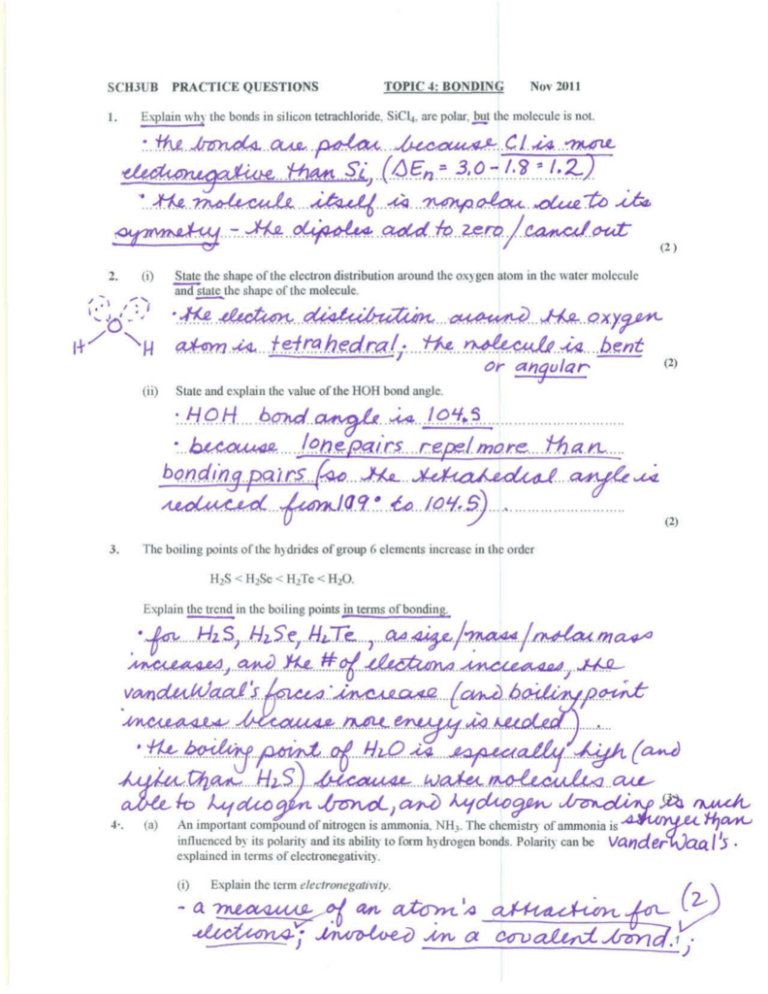
SCH3UB
1.
PRACTICE QUESTIONS
TOPIC 4: BONDING
Nov2011
Explain why the bonds in silicon tetrachloride, SiCLfc are polar, but the molecule is not.
5U^..yO<^^.. ^LdA^^
jaittL^/^Si^Af?.-/-?.:./?.^
>i
(2)
2.
(i)
State the shape of the electron distribution around the oxygen atom in the water molecule
and state the shape of the molecule.
Hr
(2)
(ii)
State and explain the value of the HOH bond angle.
jUtfaduAJsaUjJ
U
...<&*\.I&US<L
m •..&*.. ta&Sh
(2)
The boiling points of the hydrides of group 6 elements increase in the order
H2S < H2Se < H2Te < H2O.
Explain the trend in the boiling points in terms of bonding.
*
II -r-
I
I
ier*..tiij^...-...<te.&i^./3H^^
i
o f ,
i
H&.ft.^...4JU&ka^
*..A#VCMJi&^...{.GI^
L'
.j^..*juoL&
/
/ jt •
c/
..... J
4-.
(a)
An important compound of nitrogen is ammonia, NH3. The chemistry of ammonia is
influenced by its polarity and its ability to form hydrogen bonds. Polarity can be VGyidi6r
explained in terms of electronegativity.
(i)
Explain the term electronegativity.
- a TnuxsUAA&^oJ 4*,
a
/J
(2)
(ii)
—*
Draw a diagram to show hydrogen bonding between two molecules of NH3.
The diagram should include any dipoles and/or lone pairs of electrons
-a*"*1*^ M w i i
/
/
I
^
Mn^i^...
A,./.....
FT
VH
^^
» .
W14
*
^
^^^^
^
(3)
(iii)
State the H-N-H bond angle in an ammonia molecule.
a)
(iv)
Explain why the ammonia molecule is polar.
^^e.te <r<?<... /a^^
(1)
(b)
Ammoiu'a reacts with hydrogen ions forming ammonium ions, NH4+
(i)
State the H-N-H bond angle in an ammonium ion.
„
(ii)
Explain why the H-N-H bond angle of NH3 is different from the H-N-H bond
angle of NH4+; referring to both species in your answer.
el
I
J^TU p.&A^..,./U<fM<t
~.t.T^...<f&*r
.y /
J
/ —»/>
(3)




